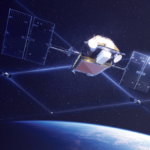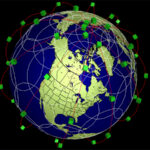 This worldwide satellite-based communications system went from dream to reality in a decade but quickly failed in the market; its revival took persistence and luck, plus a new customer base.
This worldwide satellite-based communications system went from dream to reality in a decade but quickly failed in the market; its revival took persistence and luck, plus a new customer base.
Today, Iridium is a viable mobile, satellite-based, which handles voice and data. As with standard cellular systems, its users have little or no idea of what it took in innovation, radical thinking, technology, money, undaunted determination, more money, and mistakes to make it possible. In case you are wondering what Iridium access costs, the phones (which now also include standard cellular-access capabilities and SIM cards) run about $1000 while the service has many pricing factors depending on speed, usage, voice/data mix, and use of prepaid minutes and cards; the “PhoneIsMobile” reference at the end gives some examples of pricing.
Lessons learned
The technical success, business failure, and rebirth of Iridium provide multiple lessons for advanced-technology projects. Among them:
- Technically audacious ideas and dreams can drive astounding engineering feats—with enough funding.
- A relentless champion is needed to drive the mission from the start and revive it after setbacks if needed.
- It’s easy to believe your own market projections of the size of potential customer base and skip any reality checks.
- Satellite production, launch, and management can be transformed into a quasi-mass-production process, in contrast to the one-off, fully customized satellite designs and associated operation that was the norm at the time and was for many years. Now, however, we have tens of identical low-Earth orbit (LEO) satellites launched on a single rocket in a mass-production/deployment operation.
- Rocket launches can also be successfully done on a “high-volume” basis using multiple contract launch services. Each early Iridium launch-cycle “kit” included the multiple satellites plus fuel for their steering thrusters, battery sets, the set-up and test instrumentation, an office, and everything else needed except the launch rocket itself. Total kit weight per launch was about 500,000 pounds, with shipping arranged through FedEx in many cases!
- Regulatory issues such as spectrum allocation and approval can be time-consuming in just one country and become exponentially worse when multiple countries or jurisdictions are involved.
- Local political connections and personal contacts with key influencers in each country’s bureaucracy are essential, and some quasi-ethical steps are often part of the scenario.
- Small, unplanned items can have unintended consequences, for both good and bad. For Iridium, the originally non-existent concerns about unburned debris liability became a major sticking point. They stalled the final order for the satellites’ physical demise long enough to allow a rescue plan to come together.
The final part of this article looks at one area of advances and the competitive landscape today.
EE World Content
Iridium Satellite Connectivity Added to Versatile ConnectPort X5 R Rugged Gateway
DeLorme Unveils Plans for Iridium-Based Two-Way Satellite Communicator
Basics of GPS receivers
GPS, Part 2: Implementation
GPS, Part 1: Basic principles
External References
- “Eccentric Orbits: The Iridium Story,” John Bloom, Atlantic Monthly Press, 2016.
- “Iridium Will Host Science Payloads,” IEEE Spectrum, Nov. 30, 2009
- “The Collision of Iridium 33 and Cosmos 2251,”Aerospace, December 10, 2015
- “A guide to useful, useless, official and unofficial Iridium websites”
- “The Rise and Fall and Rise of Iridium,” Air & Space Magazine, September 2004
- “Iridium ends legacy satellite service, switches all traffic to Next fleet,” Space News, February 2019
- “SpaceX completes Iridium Next constellation,” Space News, January 11, 2019
- “Iridium starting to deorbit legacy satellites as Next constellation comes online,” Space News, May 1, 2017
- “Elon Musk’s Ambitious Communication Project to Ring Earth with 40,000 Satellites,” News18, Sept 19, 2020




Leave a Reply